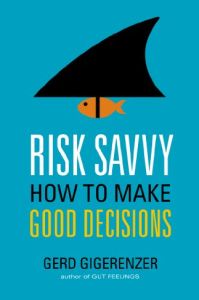Únase a getAbstract para acceder al resumen.

Únase a getAbstract para acceder al resumen.
Gerd Gigerenzer
Risk Savvy
How to Make Good Decisions
Viking, 2014
¿De qué se trata?
To make better decisions, improve your understanding of risk and uncertainty.
Recommendation
Gerd Gigerenzer, director of the Max Planck Institute in Germany, offers a brightly written guide to better decision making. He reports a widespread lack of “risk literacy,” and says that confusion over probabilities is pervasive among average people as well as among professionals in many fields, including medicine and investment management. He recommends using heuristics, or rules of thumb, to derive the best solutions for problems with unknown risks and he cautions that complicated solutions seldom fix complex problems. Gigerenzer also discusses why you can grant more credence than you might think to both trust and intuition. getAbstract recommends this intelligent overview to everyone who wants to make better decisions and cope with risk more skillfully – and especially to investors, students, entrepreneurs and cancer patients, who may take a keen interest in what Gigerenzer says about probabilities.
Summary
About the Author
Gerd Gigerenzer, the director of the Max Planck Institute for Human Development in Berlin, also wrote Gut Feelings.

























Comment on this summary